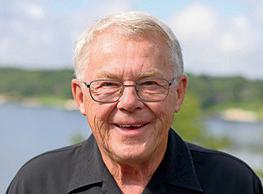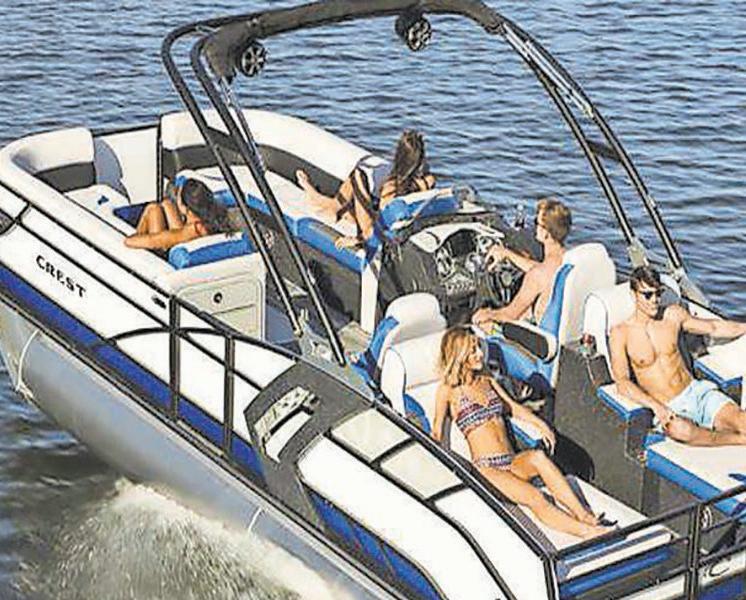Also inside ...
Shullsburg: Mine kind of town

Serving up BBQ where the rubber meats the road
How about this weather we’ve been having?
Students take an eye-opening field trip to Lake Carroll
JUNE 2023


Shullsburg: Mine kind of town

Serving up BBQ where the rubber meats the road
How about this weather we’ve been having?
Students take an eye-opening field trip to Lake Carroll





JCWIFI has lower latency*…no wonder even financial traders prefer wireless





*Latency is the delay that occurs when your computer is talking to other computers/servers; for example, you may experience low or high latency (delay) during an online auction or engaging sports game – not good!















JCWIFI offers low, consistent, no-hidden fee pricing compared to fiber and cable providers’ often inconsistent, add-on pricing









JCWIFI is local with friendly, local tech and customer support — not outsourced like a national company
































JCWIFI cannot be physically cut so is less fragile than fiber optics where cut lines can result in long outages


























SPEED

JCWIFI uses radio waves that travel at the speed of light so your wireless internet is as fast as the speed of light















aul and Rosemary Gonzalez are birds of a feather.
“We love art,” Paul said — collecting it, creating it, sharing it, whatever the case may be — “We appreciate it, whether it’s impressionists, surrealists, you name it.”
They also have a special place in their art for Mother Nature, especially her aviators.
They enjoy training their talents on the outdoors, birds in particular. Whether it’s from their Lake Carroll home, snowbirding at South Padre Island near the Mexican border in Texas, or traveling across the nation on vacation, the couple enjoys watching birds. Wherever they see one, they see inspiration — and an opportunity to let other people see what they see through their own eyes: Paul’s in photos and Rosemary’s in paintings.
Creating art is more than just a hobby for the couple.










“It’s way beyond that for me,” Rose said. “It’s putting all of my life into my work. It’s such a personal thing for me. We collect art. We appreciate art. It’s wonderful. I wish everybody could have the feeling that I have. Painting is very personal.”
The Gonzalezes have been married for 58 years. Paul picked up his interest in photography as an adult, and Rose has dipped brushes in paints for more than 60 years, having started as a child. Their works have been displayed and sold in South Padre Island in Texas, where they spend the winter months, as well as Door County in northeast Wisconsin, where they had once planned to retire before moving to Lake Carroll from Joliet 21 years ago. Closer to home, Paul’s flock of bird photos have been displayed at the Lanark Public Library, and they’ve brought their works to Lake Carroll’s annual craft show at the Clubhouse each November.
Home is where the art is for Rose and Paul, whose Lake Carroll house is like their very own art gallery, a testament to their love of all things artistic. The couple are shown at left in their living room beneath an original painting by renowned Midwest artist Curt Frankenstein of Wilmette. Learn more about Frankenstein at curtfrankenstein.com. Inset: Another piece in their collection: a sculpture by James Gagfen commemorating the 1994 World Cup soccer tournament played in the United States. Go to buckscountymag.com/james-gafgen/ to read more about Gafgen, who passed away in 2019.

Rose’s paintings have come in various sizes over the years, but recently she’s enjoyed painting “minis” — birds, lighthouses, animals and ag scenes on canvas frames not much bigger than a standard playing card.
While some might think a cramped canvas wouldn’t leave much room for Rose to stretch her creative muscles, she makes the most out of the space. The mini format also allows her to produce more pieces — about 100 a year, some for display, some for sale.
The miniature masterpieces are more versatile, too. While larger paintings are pretty much destined for walls, minis are at home on tables, shelves, desks, just about anywhere.

“What’s neat about them is that, say, if you’re in a warm climate and you want to look at snow, they can buy one of my little snow pictures and you can look at snow,” Rose said. “I think they make a very personal thing for people. I don’t want to rush them. I want to enjoy making each piece. I want to feel that. They’re very personal.”

Rose has scaled down her artwork recently, but not her output. She’s taken to painting “minis,” not much bigger than a playing card. She recently finished a batch for display at the Washington Island Art and Nature Center in Door County, Wisconsin.

The early bird catches the worm, but the patient photographer catches the shot, and Paul’s patience has paid off when he trains his camera on nature’s colorful aviators and captures some stunning photos.




With each stroke of a brush, Rose puts part of herself in her paintings. “I think they make a very personal thing for people. I don’t want to rush them. I want to enjoy making each piece.”



PHOTOS: CODY CUTTER/CCUTTER@ SAUKVALLEY.COM
Above left: Pants and paint ... Rose painted this piece, set off by autumn accents, on piece from an old pair of jeans. Left: Birds in the hands ... one of Rose’s mini paintings. Below: Rose’s work on a custom mug made by a vendor in Texas.



They’re also less expensive than larg er pieces, allowing more people to own a piece of original art. She estimates she’s sold about 400 in the past few years.
Paul’s eye for art is at home behind the lens, and like his wife, he finds inspiration in nature. When he first photographed birds and other animals, they were often stationary, but he’s since spread his wings and learned to capture moments in motion. He likes it when his pieces fly off the paper, getting more of a reaction from people than just “here’s a bird.”
“When they have something in their mouth, or they are feeding,” Paul said, “that’s what I like to see.”
Purchasing a new roof is not cheap, but it is residential proper ty. When you make a you want to do it with the confidence trustworthy company, using the best your buck, with outstanding workmanship and customer care.



Paul employs a laptop, high-quality printer, and a host of cameras, lenses, tripods and monopods for his work, and with the cost of supplies and framing going up, his pieces can command a higher price, but it’s not about the money.

“We’re not out to make a killing,” Paul said. “It’s more for enjoyment than anything else.”
That enjoyment begins with finding subjects for their paintings and photos, and fortunately the couple doesn’t have to look far to find them.

CUSTOMER CARE.
Purchasing a new roof is not cheap, but it is an investment in your residential property. When you make a large purchase like a new roof, you want to do it with the confidence that you hired the most trustworthy company, using the best quality roofing materials for your buck, with outstanding workmanship and customer care.
Elevated Roofing, stand by all of residential roofing work. the ovide
Whether it’s the birds or the bees or the flowers or the trees, nature is a favorite theme of the Gonzalezes’ art, such as this lake painting (above) by Rose, in their Lake Carroll home, or this deer photo that Paul snapped.


Lake Carroll sits along the Mississippi Flyway bird migration route, and the couple sets out food to draw their subjects closer, sometimes in bird feeders and other times using a branch — a streak of grape jelly smeared on one will attract fruit-loving birds such as the orange male oriole and the yellow female oriole, which make a stopover on their flight for a bite to eat.
Down near San Padre Island, the Gonzalezes see many birds that do not make it north of Texas, or even the Rio Grande, such as coastal black skimmers and white-tailed hawks found throughout the Gulf of Mexico and the Caribbean Sea. Rare finds on the island include Northern Aplomado falcon, Interior Least Tern shorebird and the Black-capped Vireo songbird – all of which are on the federal endangered species list. The Island has been designated by the American Bird Conservancy as a Globally Important Bird Area, and the sight of rare birds draws people from all over the world, Paul said.
It’s normal for Paul and his fellow photographers on the island to take about 200 to 300 pictures in a couple of hours, all to get the right specs and angles for a captivating shot.
When it comes to taking bird photos, silence is golden.
“Sometimes you see a bird you don’t usually see, and five or six people will come rushing toward it and they’ll be taking shots,” Paul said. “They won’t be saying a word. There is birding etiquette you got to follow: You don’t say, ‘There’s a bird over there.’ You raise your hand and you point, so you don’t make noise.”
The arrival of a single bat falcon in the United States during the winter of 2021-22 brought

the Gonzalezes and other bird photographers from around the world to Santa Ana National Wildlife Refuge in Alamo, Texas. The bat falcon is usually found in tropical forests in upper South America, especially in the Amazon, and along the coast lines of Central America and Mexico, but one had never been spotted in the United States until then.
Getting a glimpse of something like the bat falcon is part of the thrill of photography, Paul said.
“They don’t usually come here, and then they put it on all of the birding websites and people from all over the country come,” Paul said. “It was there for about two or three months.”
Rose said, she couldn’t believe how far people were willing to come to get photos of the bird. Photography is a whole other world for her, with so many details, measurements and optics to consider.
“I probably couldn’t do it because there’s so much to learn,” Rose said. “He gave me one of his cameras and I could probably play around with it, but I look at his [primary] camera and I don’t even know how they do it.”
Paul’s has been dabbling in his wife’s world, too, creating a few paintings. Rose was more than willing share what she knew, but sharing space proved to be more of a challenge. Space was at a premium in Rose’s small art studio — one of the reasons she decided to do more mini paintings — so two was a bit of a crowd.
“He tells me one day, ‘I want to paint,’” Rose said. “I told him that I’d help him with what I know, and he wanted to paint real big paintings. I said, when you see my room, you and I cannot work on big paintings in that room. So my paintings became a little smaller.”
The Gonzalezes met while working at the Chicago Athletic Club on Michigan Avenue; she was an elevator attendant, and he worked his way up from bus boy to head waiter. They raised three children (who have given them five grandchildren) and lived in Chicago, its suburbs and Pennsylvania before landing at Lake Carroll. Family became a central part of their artistic interests while their children were growing up, and Rose still creates the occasional painting for her grandchildren.
Their shared passion for art has made Paul and Rose’s nearly 60 years together a special one.
“We’re satisfied with what we do,” Rose said. “We have met a lot of interesting artists through the years. It’s wonderful. It really is. It’s so exciting. It’s just nice to talk with someone that’s so good in their field; it doesn’t have to be art, it could be anything.”

Just above the border lies a Wisconsin village full of vintage charm, where the residents invite you to learn howthetownusedtogetthe leadout,andwhyit’ssohappy thesedayswithbeingcheesy
 BY CODY CUTTER
BY CODY CUTTER
A heavy metal and a light snack? You betcha — just head north to Wisconsin to find out what this unlikely duo has in common, up to Shullsburg, which found its place on the map thanks to its lead mines, and found a place in grocery stores thanks to its creameries.
With a population of 1,200 at last count, Shullsburg may be small in size, but it’s big on history and hospitality — and even if you’ve never been to this quaint burg, you may have had a taste of the town the last time you cut into a chunk of cheddar.

Founded in 1827 as a mining town, this village once was a hub for the regional mining community, making it home to services and resources not offered in other nearby towns, and that led to a busy downtown area that served its hard-working families.
Today, the village just over the Illinois-Wisconsin border retains much of its 19th century look, giving it a feel much like Galena, Illinois — another mining town — but on a smaller scale; but that doesn’t mean there’s any shortage of restaurants and shops to enjoy. Water Street runs through downtown with one-way traffic and parking on both sides, which gives the downtown a cozy feel with plenty of mom-and-pop shops nestled in the old brick buildings that line
the street.If you want to dig into the village’s history, its visitor center downtown is a good place to start. Visitors can learn more about what helped shape the town. Photos line the center’s original limestone walls, and a short video details the town’s history. Be sure to walk out with the yearly 50-page “Experience Shullsburg, Wisconsin” travel guide, complete with a list of places to shop and visit, as well as a test to see if you’ve mastered your Shullsburg trivia.



Shullsburg wouldn’t exist without its importance as a mining hub. Even though the mines have long since closed, one

remains open for people to see firsthand what it was like to swing a pick in an underground industry. The Badger Mine and Museum, located near Badger Park, is open from Memorial Day to Labor Day and features mining exhibits that tell the story of the region’s role in the industry as well as an old lead mine. Walk down its steps and into the 19th century hand-dug mine and you’ll experience the sights and sounds of a lead miner’s life — a descent into dampness and silence, with the sounds of dripping water serving as an echo of the past.

During the industry’s heyday, people came from throughout the country and around the world to work in the mines. Many of those miners were Cornish people from southwest England, who brought with them many of the traditions and practices of their homeland, and even left a legacy that carries on at the University of Wisconsin–Madison, where its athletic teams are named the Badgers, in honor of local miners’ role in the region’s history. The miners would burrow in the earth during the day, searching for lead, and would “live like badgers” at night, sleeping in tunnels dug into the hillside.
Cornish cuisine remains popular in town, especially with the pasty — a wrapped pastry filled with seasoned meat, vegetables and potatoes that was an all-in-one handheld meal that was easy to take into the mines. Water Street Place, a downtown pub/eatery/ inn, has its own version of a pasty on its menu. While enjoying one of the dishes at the restaurant, pay a visit to the bank vault; it has an interesting story. The building originally was a bank, which closed during the Great Depression, but not before the vault was blown open with five charges of nitroglycerin during a daring 1925 bank robbery, by Joe “Chicago Blackie” Dawsie and his gang of thieves. The place also has four guest rooms on the second floor for overnight stays.
Water Street Place, 202
W. Water St., is both a restaurant and inn, with four guest rooms in one of downtown Shullsburg's historic buildings. It was originally home to a bank, and its vault has been restored (read more about the vault’s explosive history at left). The restaurant and pub is open 11 a.m. to 8 p.m. Wednesday and Thursday, 7 a.m. to 9 p.m. Friday, 6 a.m. to 9 p.m. Saturday, 6 a.m. to 11 a.m. Sunday (hours subject to change); find it on Facebook, go to waterstreetplace.com, or call 608-965-3226 for additional restaurant and pub information, or 608-9653228 for lodging inquiries.
 CODY CUTTER/CCUTTER@SHAWMEDIA.COM
CODY CUTTER/CCUTTER@SHAWMEDIA.COM






Pull up a chair and learn more about Shullsburg at its visitor center. It’s downtown at 204 W. Water St., and is open 9 a.m. to 5 p.m. Wednesday through Sunday. Go to experienceshullsburg.com for more information.








As mining’s role began to wane, agriculture played a bigger part in the area’s economy, especially dairy farming and cheese. Today, that slice of local life is celebrated in Shullsburg during its annual Cheesefest the first Saturday of October (this year’s is on Oct. 7), when Water Street is filled with cheese vendors, craft tables, kids activities and music.
Shullsburg Cheese, established in 1934, makes a variety of cheeses in slices, blocks, shredded, and spreads, as well as its own butter. The creamery operates a downtown store where its cheeses are sold, both packaged and freshly sliced, along with sausages, wines and snacks. A gift shop also is attached to the cheese store. In recent years, Shullsburg Cheese has taken top honors for its hickorysmoked mixed cheese curds, Colby Jack longhorn, smoked Swedish dry jack and buffalo cheddar.
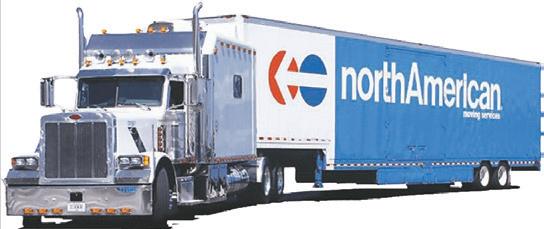
If you’re looking for cheese, you’ll find it in Shullsburg. As mining’s slice of the local economy became smaller, agriculture and cheese making took their place. Today, cheese is the city’s leading industry, celebrated each year during the citywide Cheesefest on the first Saturday in October.

According to experienceshullsburg.com ...


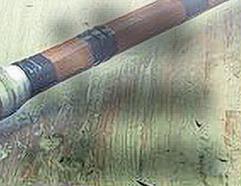





Shullsburg’s free, family-friendly festival is held on historic Water Street with entertainment and events throughout the entire day.
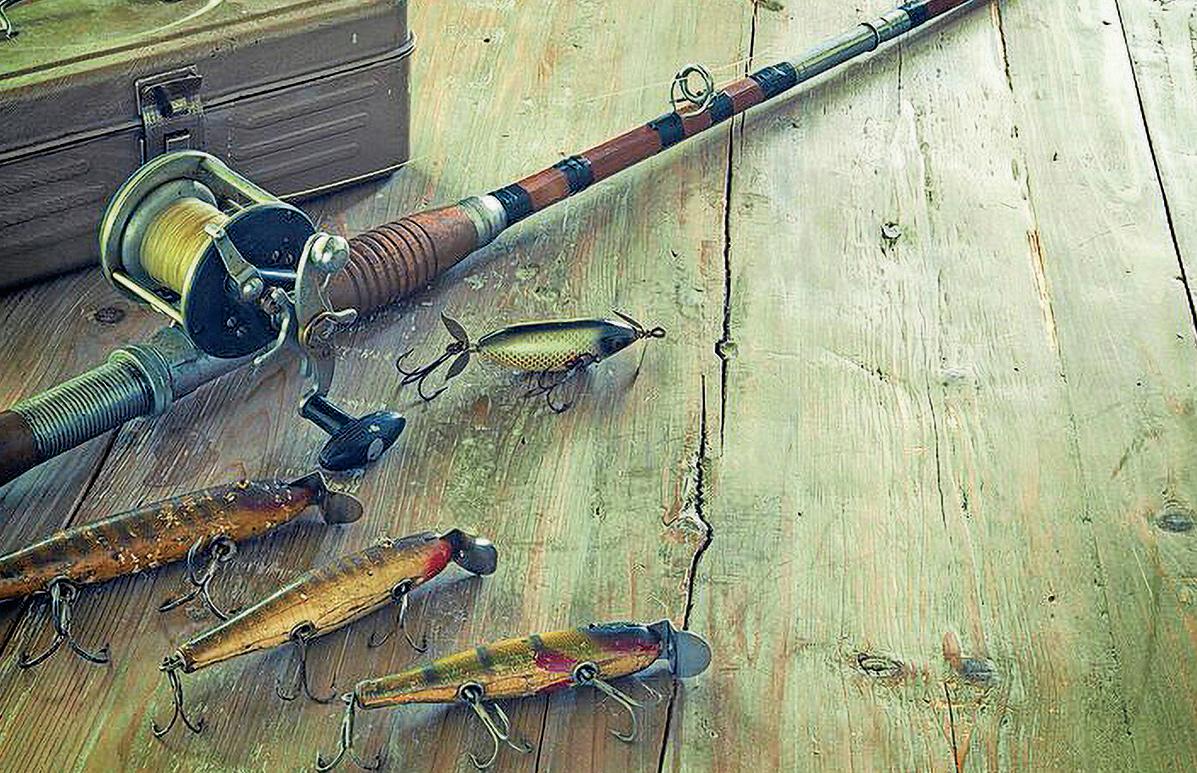
The event gets underway early, starting with the Shullsburg Fire Department’s annual breakfast, a wide array of CheeseFest Street Market vendors, and wine and cheese tasting. In addition, all the town’s regular shops and businesses are open.
Throughout the day, visitors will find Main Stage Events on the corner of Water and Iowa Streets, a centralized hub that hosts free live entertainment and music, a cheese IQ test and more. Other events include the Shullsburg Friends of the Library’s annual book sale, hayrides, children’s activities, a Scarecrow Contest, and a raffle for prizes.
Find “Cheesefest in Shullsburg” on Facebook for more information.

Shullsburg Creamery
cheese shop 208 W. Water St,; open 10 a.m. to 5 p.m. Monday through Friday, and 9 a.m. to 5 p.m. Saturday and Sunday; find it on Facebook, go to shullsburgcreamery. com/tradition-quality/explore-the-cheese-store, or call 1-888-331-1193.
Roelli Cheese
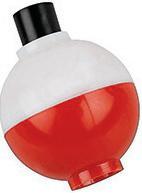
Haus 15982 state Route 11; open 8 a.m. to 5 p.m. Monday through Friday, 8 a.m. to 4 p.m. Saturday, 10 a.m. to 4 p.m. Sunday; find it on Facebook, go to roellicheese.com or call 608965-3779.
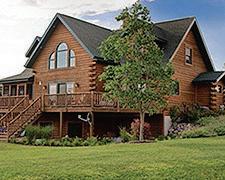


Got some extra time after visiting Shullsburg? The city’s visitor guide lists some other cheese shops a short drive away: Gile Cheese Store 116 N. Main St., Cuba City (about 10 miles west of Shullsburg) Brunkow Cheese 17975 County Road F, Darling- ton (about 10 miles northeast) Zimmerman Cheese Wiota 6853 High- way 78, South Wayne (about 15 miles west)

The Shullsburg area is referred to as the Wisconsin Lead Region, as noted on this historical marker on state Route 11 west of town.

Care for some mine with that cheese? You’ll find it in Shullsburg, where the city’s history as a mining community is still celebrated throughout town.



BELOW: The Badger Mine and Museum shares stories and artifacts from the town's mining industry. The mine onsite dates back to the 1850s. More info: Badger Lead Mine, 279 W. Estey St.; open 11:30 a.m. to 4 p.m. Thursday, Friday and Saturday from Memorial Day to Labor Day; find it on Facebook, go to badgermineandmuseum.com or call 608-965-4860.


These taverns in a pair of small towns west of Shullsburg hark back to the days when the sounds of mining wagons rumbling along roads and the clinks of axes filled the air. New Diggings Inn and General Store in New Diggings (above), and The Mine (above) in the small community of Lead Mine both serve food and drinks in a rustic setting.


 TOP: Shullsburg’s mining heritage is remembered through its high school mascot, the Miners. ABOVE: the University of Wisconsin–Madison mascot, the Badger, which was inspired by the area’s lead miners, who were nicknamed “badgers.”
TOP: Shullsburg’s mining heritage is remembered through its high school mascot, the Miners. ABOVE: the University of Wisconsin–Madison mascot, the Badger, which was inspired by the area’s lead miners, who were nicknamed “badgers.”
St. Mathew Catholic Church, 344 N. Judgement St., held it first service in 1861. Grouped together around the church are streets named Charity, Faith, Friendship, Goodness, Happy, Judgement, Mercy, Peace, Pious, Truth, Virtue and Wisdom. Go to shullsburgcatholic. com for Mass times or call 608-491-1035.
A big part of Shullsburg’s charm is the village’s dedication to preserving its historical architecture.












Second Chance Coffee Shop is housed in a former bank (its black burglar alarm is still hanging out front, above and to left of the corner doors, below the white cornice). The shop serves hot and cold coffee drinks and pastries, and also hosts the occasional band





















Shullsburg's City Hotel, later renamed the Montezma House, retains its classic look on West Water Street. The former hotel was built in 1846, and has been converted into apartments.

The town’s namesake creamery isn’t the only blend of cheese made in town. For more than 100 years, the Roelli Family has crafted national, award-winning cheeses from the Roelli Cheese Haus. Their specialties include dunbarton blue, red rock, little mountain, farmhouse Colby, Monterey Jack, Goudas Kaas, Havarti and Cheshier. Owner Chris Roelli has Wisconsin master certifications in cheddar, blue-style and alpine-style cheeses.



Cheese from both the Shullsburg shop and Roelli’s can be shipped to all 50 states, and both offer online shopping.










While business keeps the traffic flowing on Water Street, Shullsburg is home to other streets that city hopes will leave a positive impression on people. Grouped together around St. Matthew Catholic Church are streets named Charity, Faith, Friendship, Goodness, Happy, Judgement, Mercy, Peace, Pious, Truth, Virtue and Wisdom. The street names make for interesting and inspirational road sign pairings at the intersections, such as Happy and Goodness or Charity and Friendship. Stand on one of the corners for a fun photo op (and don’t forget to say “cheese!”).

The church itself is located at the southeast corner of Peace and Judgement streets; the limestone structure held its first services in 1861, and its tall bell tower can be seen throughout the town. St. Matthew Parish was established by Fr. Samuel Mazzuchelli in 1835, one of several throughout southern Wisconsin, eastern Iowa and northwest Illinois established by the now-venerable preacher.
As the city’s website says: “Peace, Goodness and Friendship aren’t just our street names, but a way of life.”


There’s a lot that intersects in Shullsburg — Charity and cheese, mining and Mercy, a Happy place among the history, Friendship and fun — so whatever you’re looking for during your day trip, all signs point to a good time in this village just north of the border.

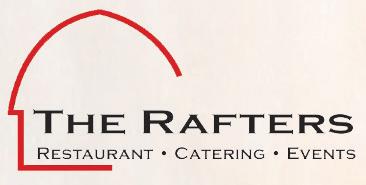








When Rhett Roethe saw an opportunity to spread his culinary creativeness to more than just his familiar confines of Carroll County, he came up with a way to put his plans in motion — and all he needed was a set of wheels and the open road.
Having cooked myriad meats and garnering accolades from food competitions for nearly 20 years with family and friends, Roethe took on a delivery method that was rarely seen in northern Illinois a decade ago: a food truck. Now, he and his business, 3-Headed Monster BBQ, are deans of sorts of the food truck business model that’s growing throughout the area. Roethe’s food truck — decked out in a log-cabin wrap — makes the rounds at regular stops and at events throughout the area, serving barbecue beef, chicken and pork, and sandwiches, brisket, ribs and other dishes.

Among the stops on his route is the Behrz-Bloomz flower shop at the corner of Locust Street and Lynn Boulevard in Sterling, as well as CVS Pharmacy near the busy intersection of state Route 26 and South Street in Freeport. That may sound like a few miles between stops, but the two locations are about the same driving distance from Roethe’s pits and kitchen in Shannon.
Roethe has appeared regularly in Freeport since 2010 and Sterling since 2015, and has seen a lot during his time in the food truck business — “been there and done that,” he said.

“When we started in 2010, in northwest Illinois there were no food trucks,” Roethe said. “You had festival trucks, you had carnival trucks, but you did not see daily runners.”









Roethe started 3-Headed Monster in 2009 as a catering business born from his passion for barbecue meat. After about a year, he started to become interested in the idea of a food truck, having learned about them from a fellow barbecuer. There was just one problem: There were no rules of the road. At the time, few counties had codes on the books for food trucks.

“The Carroll County Health Department and us kind of learned together,” Roethe said, and other counties would eventually follow suit. “It’s a lot more regulated today than it was when we first started because they didn’t have food trucks around.”


Pork, brisket and chicken are the main meats on the menu, with pulled pork sandwiches, brisket sandwiches, and Monster Bites (pork chunks) among 3-Headed Monster’s most popular items. Roethe piles on nearly a pound of pulled pork and brisket on the buns, while the Monster Bites weigh in about the same. The trio of heap-
3-Headed Monster has made stops in Freeport since it first hit the road in 2010. The truck currently makes regular appearances at CVS Pharmacy, 721 W. South St.; check 3-Headed Monster's Facebook page for exact dates for each stop.
ing helpings are menu staples at each of the food truck stops, with the rest of the menu rounded out by about 25 other items offered on a rotating basis, some of which include a pork loin, BBQ chicken thigh sandwich, smoked Italian beef sandwiches, smoked beer brats, and even a “smokey” combination of Italian beef on top of a beer brat. Salads, including potato, pea and cole slaw, are offered as sides along with potato chips and Pepsi products; meal deals also are available.












Derek Schubert of 3-Headed Monster BBQ serves a cup of pork Monster Bites to Stephanie Dusing, owner of Behrz-Bloomz flower shop in Sterling, one of the truck’s regular stops.

The meat is cooked in Shannon and kept hot and ready to serve on the truck, which is manned by either himself, a family member or friends. Stops are posted each week on the 3-Headed Monster Facebook page.


“The quality of the food is our main goal,” Roethe said. “Everyone wants to come knowing that when they order, say, a brisket sandwich that it’s going to taste like the brisket sandwich they had the last time. That’s our No. 1 goal, to make people happy and let them know that they can come back for a third time or a fourth time.”



Payment is cash or Venmo (an online payment app for smartphones that uses a QR-code).

“Our food truck menu, in my eyes, is the coolest food truck menu that you’re going to find,” Roethe said. “We change it every day. We have about 25 to 28 different items that we rotate, so when you come to our truck you’re always going to find something different.”
On top of making the usual rounds in Freeport and Sterling, Roethe recently has established a semi-regular stop at The Dispensary in Fulton, on the corner of state Routes 84 and 136. His calendar is full of special events, birthday and corporate parties, weddings and the occasional fair, so if you want his food truck to swing by, it’s best to book as early as possible, Roethe said.
He also plans to bring his truck to Lake Carroll for a couple of summer weekends at the West Marina,
where business was great for him last year — but folks there don’t have to wait for Roethe’s ride to roll in. They can take advantage of 3-Headed Monster’s “meat out the door” service, ordering in advance via email or Facebook Messenger and picking it up in Shannon.
“They’re good for a weekend getaway or a family reunion,” Roethe said. “We have a lot of Lake Carroll customers that will order early in the week and pick up on Friday on their way out to their home for the weekend. If they want to come out for the weekend, but they don’t want to cook, we’ll do the job for them.”
Roethe has seen customers stop by for pickups from as far as Dixon, Dubuque and Rockford as well, and has even seen people come by either the truck or the kitchen after hearing from out-of-towners about his food. He also plans to establish an outdoor seating area at his place in Shannon this summer where people can stop by for a meal, listen to music on the stereo and plug into free WiFi.
Find 3-Headed Monster BBQ on Facebook to check out where its food truck will be. Car ryout also is avail able at its kitchen at 118 N. Stanton St. in Shannon. Email 3hmbbq@gmail. com or send a message through Facebook Messenger to place a custom order, arrange for an event, or for more information.

“We grow by word of mouth and by referrals by the quality of our food,” Roethe said.





Words aren’t the only thing on people’s lips that give the business a plug there are the smiles, too. That’s something Roethe has been used to with his past experience as a youth counselor.
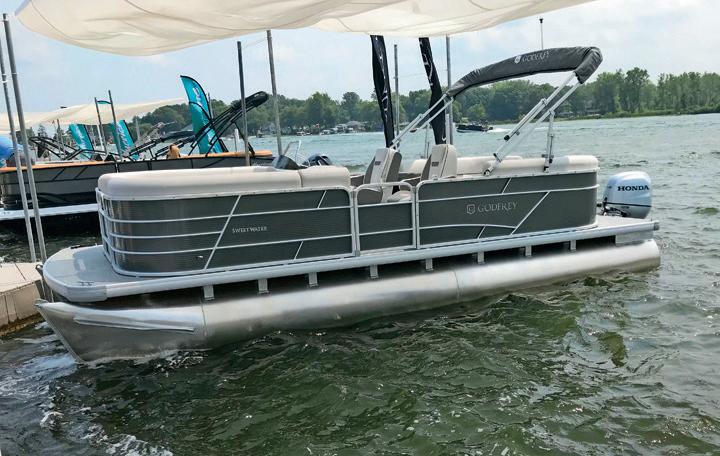




“Serving and cooking food has some of the same effects as counseling, because we’re making people feel good,” Roethe said. “When people enjoy our food, you see the smiles on their faces and the ‘thank you’s for what we do for them, whether it’s to me or the person in the truck serving them, it brings a smile to our face to see how they enjoy what we are offering.”
As with any business, there’s always competition, which doesn’t have to be a bad thing. Competition can be healthy for businesses, Roethe said, as long as vendors are respectful of properties and other businesses. With 13 years experience under his apron, he’s been able to become a mentor of sorts for others who look at a food truck and think, “That’s a neat way to make a buck.” Indeed, more food trucks have popped up in recent years, manned by aspiring entrepreneurs who want to bring their own blend of cuisine to more people, either to make a living or just earn some money on the side.
“The food truck is not going anywhere,” Roethe said — except to more destinations. “It’s only going to grow, what with the overhead costs of brick-and-mortar and changing times. The food truck industry is a way for some to get into the business, and for others to be more mobile and accessible for others to get to places.”

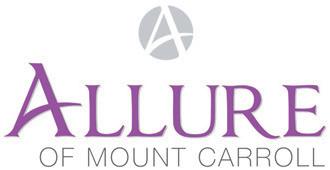


ou know what they say about the weather: Just wait a few minutes and it’ll change.
From back-and-forth swings between rain and snow, to flooding along the Mississippi River, Lake Carroll and Carroll County saw some interesting weather moments this spring.
Some days there was a couple of inches of snow on the ground and the next day it was gone. The mercury was getting whiplash bouncing up and down, with 40-degree temperature swings from one day to the next. Then, as March made way for April, a destructive duo of fast-moving storm fronts — one on March 31 followed by another on April 4 — tore through northwest Illinois, bringing rain, high winds, tornadoes and the kind of hail that gave vehicle owners a splitting hood-ache.
If that wasn’t enough, record snowfall in the upper Mississippi River watershed in Minnesota and Wisconsin caused flooding downriver during the final weeks of April, including in Savanna.
It seemed like Mother Nature was having an identity crisis.
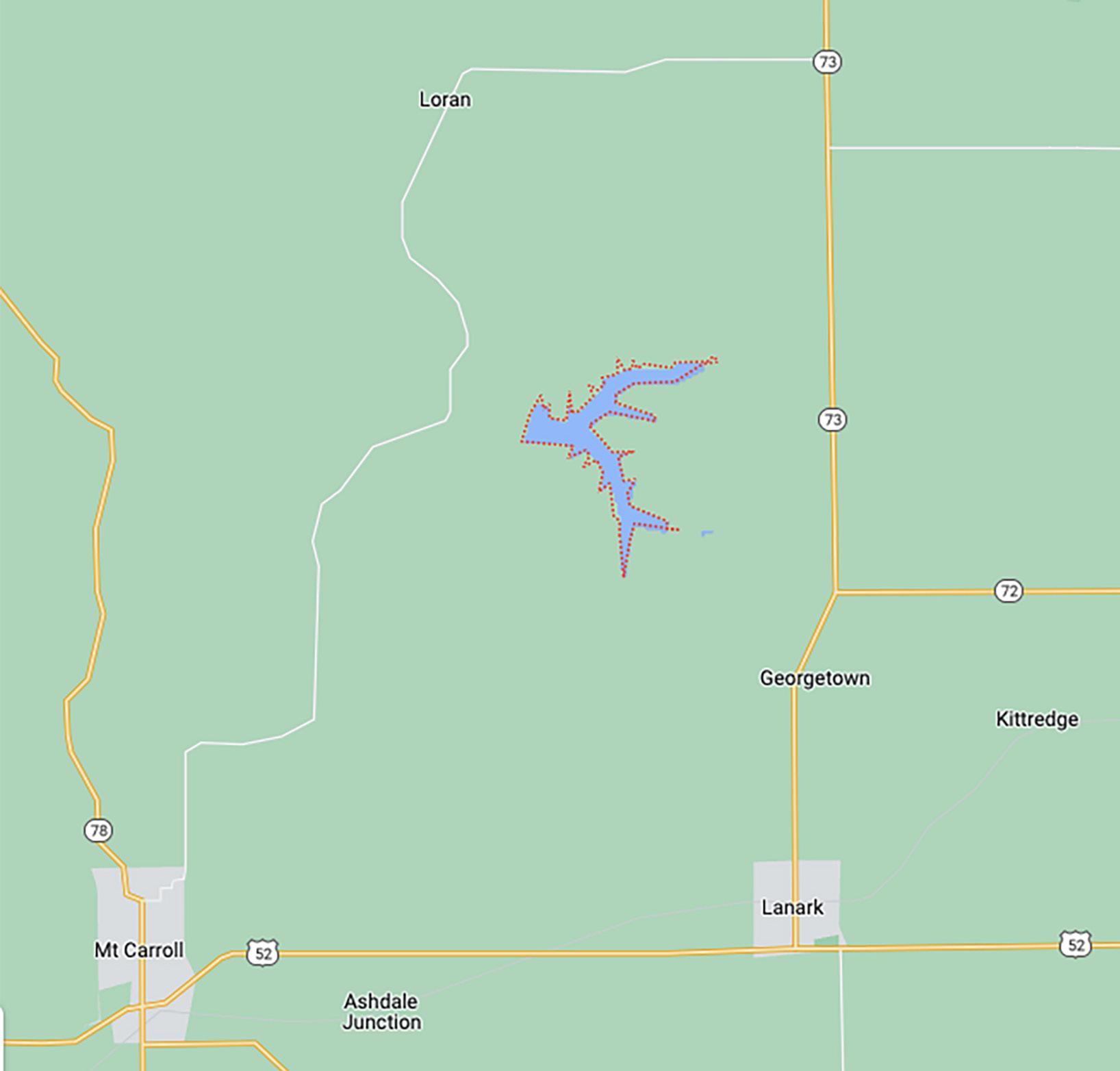
While Lake Carroll was fortunate to escape the worst of the weather, with only scatterings of tree branches on the casualty list, other areas in Illinois weren’t as lucky. During the March 31 stormfront that dropped several tornadoes throughout the region, a section of the roof on the Apollo Theater in Belvidere collapsed during a rock concert, killing one person and injuring 28.
That same storm left its mark, and debris, in other places,
3086 Route 26 N. Freeport, IL 61032 815-235-7549


FreeportHondaKawasaki.com

the worst of it along highways leading from Lake Carroll to Chicago on state Route 72 near the Carroll-Ogle county line, where a roof from a large machine shed was torn off and tossed about 500 feet to the east near the highway shoulder.
A few days later in Ogle County, a hail storm dropped ping pong ball-sized hail that piled up and jammed storm drains, and damaged roofs and cars, including nearly 2 dozen Ogle County Sheriff’s vehicles.
Flooding rarely is an issue in Lake Carroll, but its surface does fluctuate from time to time. The lake's highest recorded height was 745.5 inches on July 24, 2010, which is 4.5 feet above the lake's pool state figure of 740 feet. CODY

KAWASAKI CARES: READ OWNER’S MANUAL AND ALL ON-PRODUCT WARNINGS. ALWAYS WEAR PROTECTIVE GEAR APPROPRIATE FOR THE USE OF THIS VEHICLE. NEVER OPERATE UNDER THE INFLUENCE OF DRUGS OR ALCOHOL. PROTECT THE ENVIRONMENT. THE KAWASAKI MULE™ SIDE X SIDE IS AN OFF-HIGHWAY VEHICLE ONLY, AND IS NOT DESIGNED, EQUIPPED OR MANUFACTURED FOR USE ON PUBLIC STREETS, ROADS OR HIGHWAYS. OBEY THE LAWS AND REGULATIONS THAT CONTROL THE USE OF YOUR VEHICLE.

©2019 KAWASAKI MOTORS CORP., U.S.A.




Though a tornado has never beaten a path to Lake Carroll’s door, one did touch down in the area on April 18, 1955, 17 years before Lake Carroll was established. The tornado moved along a west-to-east path, entering around what is now Hidden Valley Drive, crossing the future southern prong of the lake, running alongside Payne Road and petering out in an area north of Shannon (see the next page for a map). The tornado, which was determined to be the equivalent of an EF-2 rating on the Enhanced Fujita Scale system, travelled for 9 miles and was estimated to be 77 feet wide.




There were no fatalities in that twister, but several cattle, chickens and hogs perished in the storm — and some afterwards. The tornado tossed some hogs into the trees, where farmers were forced to shoot them down, according to a story in the next day’s Sterling Daily Gazette. Some personal injuries were reported, also according to the newspaper, though none serious: A daughter of Cecil Imel, who farmed on the southern edge of where Lake Carroll is today, hurt her toe after debris from a rising house fell near her; and a Dixon couple driving near the intersection of state Routes 72 and 73 had their car tossed by the tornado into a nearby field, but both escaped with minor injuries.
The hail piled up in Ogle County on April 4 when a fast-moving storm system pummeled parts of the county with so much hail that it piled up like snow, clogging storm drains and damaging roofs and vehicles. The first two rounds were pea-sized, while the third round dropped chunks of ice as large as ping-pong balls.
 EARLEEN HINTON/ SHAW MEDIA
EARLEEN HINTON/ SHAW MEDIA



Has a tornado ever crossed Lake Carroll? No — and yes. On April 18, 1955, 17 years before Lake Carroll was established, an EF-2 tornado cut a straight path across Carroll County, entering around what would become Hidden Valley Drive and running alongside Payne Road before it petered out in an area north of Shannon.




...
As for rain, too much of it can increase runoff going into watersheds, such as the ones from the east and south that enter Lake Carroll and then flow into the Plum and Mississippi rivers. Lakes don’t tend to flood like rivers and streams do because they are wider. Since water level records were first kept in 1993 by Lake Carroll management, the lake has fluctuated about 14 feet between its highest and lowest points. The lowest recorded height was 731.6 feet in November 1993, and the highest was at 745.5 feet on July 24, 2010, after about 14 inches of rain fell over that weekend. The lake’s pool level is 740 feet; when levels reach higher than that, lake water will spills over through the Leroy Hinkle Dam and into the creek. While flooding is rare at the lake, it has affected several places around it in recent memory, to its east, north and west: The Yellow Creek that runs through Pearl City and Freeport, the Pecatonica River in Freeport and Martintown, Wisconsin, and the Mississippi River have all pushed past their banks, with the Mighty Mississippi’s floods reaching historic levels through the years. After heavy rains in 2010, flooding from the Plum River, which water from Lake Carroll feeds into, caused significant damage in southern Savanna.
Landscaping and Lawn Care


This ominous looking storm front moved through the Sauk Valley on March 31, bringing heavy rains, strong winds and hail — and if you were traveling on state Route 72, east of Shannon, you saw just how rough things got. This machine shed roof, from the Gempeler Farm less than a mile east of the Carroll-Ogle county line, took a 500-foot ride and ended up by the side of the road. Nearby, a piece of the shed was wrapped around a utility pole.








Stan Kosmecki of Mount Carroll watches the Mississippi River as it rises April 30, flooding streets just west of Main Street in downtown Savanna. The two trees on the left indicate where the river’s bank is normally.

This year, sandbags in Savanna were out in full force not because of the Plum River, but rather the much larger Mississippi, due to record snows up north. At the western tip of Lake Superior, Duluth, Minnesota, broke its record for the most snow in a season, with 138.3 inches, according to the National Weather Service, up from its previous high of 135.4 during the 1995-96 winter season. Snow melt from that area runs south into watersheds that drain into the Mississippi River, which also takes on many more streams from Minnesota and Wisconsin, which also saw more runoff from snow melt. The result: flooding to south along the river.
The National Weather Service monitoring station for the river in Bellevue, Iowa, across from river from near Hanover, documented a crest of 21.9 feet on April 30. The mark, unofficially, is the third-highest figure at that point — about a half-foot more than the historic flood of 1993, but still a foot-and-a-half short of the historic 1965 flood. The river continued to be problematic downstream, topping over state Route 84 near Albany in Whiteside County, and closing riverfront streets in Davenport, Iowa.

The National Weather Service, which issues weather warnings and advisories, has regional bureaus that monitor weather in specific areas. Carroll County is served by the NWS bureau in Davenport (referred to as The National Weather Service in the Quad Cities). Illinois counties to the east, including Lee, Ogle and the Chicago area, are served by the bureau in Romeoville (referred to as The National Weather Service in Chicago). With technology that can predict and pinpoint severe weather, there are more tools available than ever before to keep people safe and weather watchers happy. TV meteorologists can track weather events, interpret radar data, and warn people to take shelter before a storm strikes; smartphone apps can send out alerts as they’re issued; and social media sites provide updates (find “US National Weather Service Quad Cities Iowa/Illinois” or “US National Weather Service Chicago Illinois” on Facebook or NWS Quad Cities and NWS Chicago on Twitter). People can also keep tabs on the National Weather Service bureaus at weather.gov/dvn in Davenport, and weather.gov/lot in Romeoville.
Since weather activity in Lake Carroll typically comes from the west, keeping a watch west of the Quad Cities can also help, which can be found through the NWS bureau in Des Moines, Iowa (weather.gov/dmx).
In addition to weather monitoring, each NWS bureau also serves as a library of information for past weather activities, tracked by both its office staff and trained weather spotters. Spotters closest to Lake Carroll are at the Mount Carroll Water Department, which has documented local weather information at around 8 a.m. each day since 1897, making it one of the oldest spotter sources in the state. Information from Mount Carroll is the best indicator of what weather has been like in the lake community’s 51 years.
Looking back at that information, one recent entry stands out as one for the record books. During a polar vortex on Jan. 31, 2019, the mercury plunged to 38 degrees below zero in Mount Carroll, establishing a new record as the lowest recorded temperature in the state, a teeth-chattering honor previously held by Congerville, a small town near Peoria, which recorded a temperature of 36 degrees below zero in 1999.

Other notable weather events in the area during Lake Carroll’s time include the Blizzard of 1979 and the Aug. 10, 2020, derecho.
During the blizzard, the Mount Carroll spotter station recorded a peak snowpack height of 33 inches on Feb. 12 and 13. The previous snowpack record was 32 inches, from Feb. 17-22, 1936.
The highest wind gusts to blow through the Lake Carroll area occurred during the 2020 derecho; a peak gust of 100.118 miles per hour was estimated in Forreston on that day. That event also produced a small tornado that traveled northeast from Florence to Freeport in Stephenson County.
Other notable records from Mount Carroll include a high of 108 degrees on July 12, 1936, just under 7 inches of rain on June 4, 2002, and 12.5 inches of snow on Feb. 10, 1960.



As for that “s-word,” has the weather ever flaked out in May? Yes, at least twice in Mount Carroll, with traces recorded on May 1, 1907, and May 4, 1954. How about in the fall? The earliest recorded snow was a trace on Oct. 14, 1999, with an October peak of 4 inches recorded on both Oct. 27, 1925, and Oct. 31, 2019.
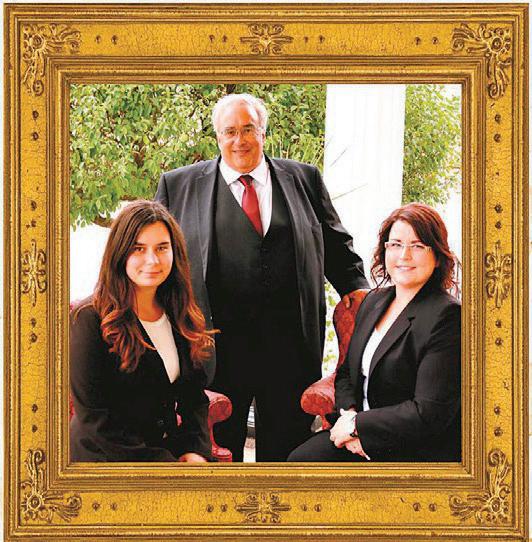
The National Weather Service has regional bureaus at the Quad Cities in Davenport, Iowa; and in the Chicago metro area in Romeoville. Another is located west of the Quad Cities in Des Moines, Iowa.

Davenport: weather.gov/dvn
Romeoville: weather.gov/lot
Des Moines: weather.gov/dmx
History: Go to weather.gov/wrh/ climate?wfo=dvn to search weather history in Mount Carroll dating back to 1897.


































he walls don’t have ears at Lake Carroll’s fish hatchery, but they do have eyes, and some students from West Carroll Middle School learned more about those walleyes last month during a field trip to the hatchery.



The hatchery hosted a group of students April 19 who got to learn a little about the birds and bees — and the fish — at the facility that helps brings walleye into the world, and then the lake. Hatchery volunteers hosted open houses throughout the week for students from area schools.


Bill Klostermann talks to West Carroll Middle School students about the boat used to deliver the walleye to different parts of the lake during the open house. Many fish thrive in Lake Carroll, except walleye, which need a helping hand from the hatchery.

Joe Esposito talks to students from West Carroll Middle School while gesturing toward jars of walleye eggs April 19. After harvesting and fertilizing the eggs, volunteers wait for the tiny fish to grow a bit before releasing them into a holding pond.

























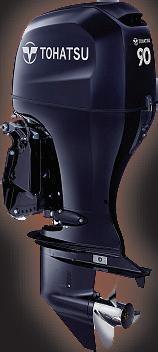





Lake Carroll Fish Hatchery volunteer Len Masella talks to students about the process of netting grown walleye. The hatchery grows walleye exclusively for lake fishing.

The hatchery, one of the few in the state that’s privately owned, keeps the lake stocked with fish. Lake Carroll’s Fishing Club maintains the hatchery and the gear that keeps it running, and for 6 weeks out of the year the hatchery is teeming with life as members keep their eye on millions of eggs vying to see the light of day.




Once ice thaws on the lake, usually by early April, club members start gathering up as many walleye as they can to harvest their eggs, as many as 25,000 from one fish. How do you harvest fish eggs? With a squeeze, kinda like a tube of toothpaste. Once they’ve got the eggs, they’re placed in a steel bowl and fertilized (courtesy of the male walleyes’ contribution to the cause). The next step on their journey back into the water is into a bin for a few hours, then into a large tube. About 2 weeks later, they begin to hatch and the small fry — no, that’s not a nickname; newly hatched fish are called fry — wiggle in to the world. The fry are then placed into another tub for about 4 days before being placed in a nearby holding pond where they’ll become strong enough to survive in the lake. After a few months, the pond is drained through a valve where the fish are netted and transported to the lake. The survival rate for the eggs is less than 1 percent, so of the nearly 25,000 eggs laid by one fish, less than 250 usually make it through the hatching process.




Are you looking to enjoy the Lake Lifestyle?
The following pages will show you the properties available to you right now!


25-57 Cottage Hill Ct.





1.6 acre waterfront property with magnificent wide views of Lake Carroll. Contemporary home with 3 finished levels and attached garage. Dock included.



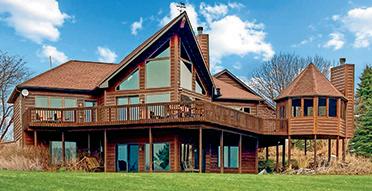

3 BEDROOMS - 3 BATHS - 2,564 FIN SQ FT $715,000

SLIP

1-64 Captains Dr. MAGNIFICENT LAKE VIEW AND BEAUTIFUL FLAT LOT TO THE LAKE! Charming home with 3 finished levels all with BIG views of the lake.
3 BEDROOMS - 2.5 BATHS - 2634 FIN SQ FT NEW PRICE $699,000


19-16

Ridge Road New construction home can be ready for early 2024. Includes deeded slip D-5 in the west marina 4 BEDROOMS - 3 BATHS 3160 FIN SQ FT $399,000

New Construction Home Ready For Late Spring 2023! Includes Deeded Slip C04w In The West Marina available for 2023 season.

4 BEDROOMS - 3 BATHS 3160 FIN SQ FT $399,000


19-32
DEEDED SLIP D-12 IN THE WEST MARINA AVAILABLE FOR 2023 SEASON! Completely updated and renovated property which includes all furniture, decor and appliances
4 BEDROOMS - 3 BATHS 1872 FIN SQ FT $329,000
































